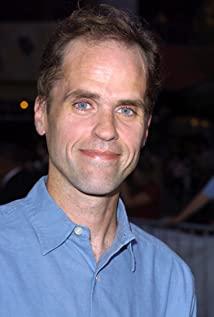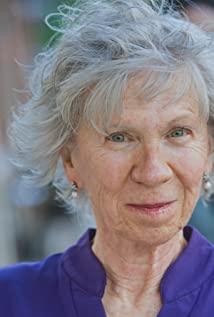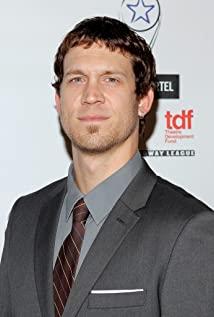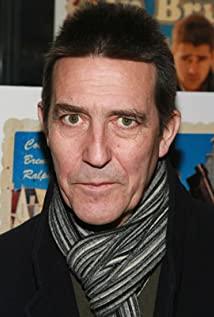The title comes from the seventh chapter of Exodus: "Egypt is full of images of the coming blood, even in wooden or stone vessels."
The American economic depression in the early 19th century tells the story of a lonely oil prospector who made a fortune and lost his soul while chasing wealth. The overall tone of the film is dark, and it shows the dark side of human nature and the ugly struggle of interests. The photographer used a simple framing frame, a minimum number of lenses, extremely plain colors, and bland scenes to bring the audience into that era.
The overall image style can generally be summed up in terms of openness and simplicity, delicate atmosphere, and gentle and depressing.
1. Light and Shadow: Undercurrent of Blood
1 Realism uses the original principle of light
Adhere to the principle of realistic lighting. From the perspective of light sources, no scene is emphasizing the rationality of the light source, and there is no unreasonable light source.
The light and shadow style is generally realistic, with restraint, no publicity, no extreme, exaggerated, and highly conceptual light and shadow performance. The sun is the best light source. The film uses the characteristics of low-sensitivity films to vividly show the different atmospheres created by light at different times of the day in the western United States.
The soft light is delicate, and the backlight shooting is very restrained. Outdoor shooting basically presents the style of natural light effects, of course, natural light effects do not exclude artificial light.
2 Light and shadow modeling of the character's face
When the protagonist Daniel lobbied the giant gate, the light characteristics of the characters' faces were illuminated by an indoor ceiling light as the light source, and the light incident from the front side of the characters' heads achieved the effect of clearly reflecting the characters' facial features. The hats worn by the protagonists form shadows on the eyes, which form an uncertain picture effect along with the dynamic of the characters speaking themselves. It shows that as an oil businessman, Daniel is in a state of unpredictable critical point of interests and humanity at this moment. It is difficult to tell whether the lobbying is true or false, and the picture effect accurately reflects this state.
3 Backlight silhouette effect
A large number of backlit shots form a stylized effect, which seems to be a characteristic picture of Western themes. The exposure to sunlight of the western wasteland, coupled with the high reflectivity of the yellowish sand, makes most outdoor images look high-key. Some temporary offices built near oil wells are light-transmitting pavilions with glass on all sides. Most of the normal interiors rely on a single light source for lighting. (The main light source comes from the window) in the daytime scenes.
The use of windows is very characteristic. A large number of windows are placed in the depth of the scene, and the surrounding area is bright. Naturally, it is shot against the light, which increases the difficulty and labor of photography, but also enriches the dark part of the film.
57 minutes, side backlight, half of Daniel's face is in the shadow, the light and dark layers are distinct and the contrast is strong, the bright part is Daniel's deep eye and rich expression, and the other eye is still buried in the shadow part. The tone created by this light design better reflects Daniel's psychological changes.
In 125 minutes, preacher Eli got on the train. Daniel in the dark in the house did not say a word and made no sound. The silhouette of Daniel in front of the window appeared on the screen. This time, the silhouette is the most intense and meaningful. The dark part of the whole picture is thick and thick, indicating that Daniel's eloquent plan and dark but powerful inner world contrast with Eli's superficial bright tones and show overwhelming dominance.
4. Low illumination special light source
One of the highlights of the movie is the presentation of high-quality pictures under low illumination. Most of the night scenes in the film use firelight or low-illumination oil lamps as the light source. The derrick is on fire, and the red light outlines the inner side of the character's devil, like the redness of hell. Flame, the beating tongue of flame licked the character's cheek. [The fire in the film is real. The special effects team ignites the mixture of diesel and gasoline. The fire is controlled by a large oil pump. The only digital processing place is the explosion at the top of the oil well, which is handled by Industrial Light & Magic]
It is the nature of Daniel's businessman to be greedy for profit, and his loneliness and suspicion is only due to his character and years of experience, but he is a magnanimous real villain who can calculate others for his own interests, but never hide his desires, ambitions and rebelliousness. It is difficult to open Xinwei to outsiders, as if his world only has benefits, but in fact it is a proud loneliness that only the strong can enjoy.
Eli's hypocrisy can be seen when Eli beat his father at the dinner table.
2. The Nightmare of Gold and Black
In the low-saturation, near-achromatic world of There Will Be Blood, gold and black stand out. Perfectly in line with the theme of the film, black oil is a golden dream, and within the golden dream there is a dark surge of blood. Daniel and Priest Eli are dressed in black and grey, and the workers are dressed in yellow. Daniel wears a black suit, as does Preacher Eli. Black suits are generally a sign of sociality, a necessity in adult society. The black suits in the film are more of a social performance prop, covering up their hypocrisy and greed in Daniel and Eli.
Black is the color of loneliness. At the beginning of the movie, Daniel was working hard to drill ore under the dark mine. The silhouette of Daniel was faintly seen against the background of the top light. The golden spark from the axe drilling the ore was the only color in the darkness. This single touch of color symbolizes the lone businessman's paranoid thirst for money. Gold in Daniel's world is the color that brings him hope and pushes him to despair. Gold and black are inseparable in the film.
The golden sunset, the bloody sunset, the black oil erupted, the black oil turned into a golden fire snake, the golden flames burned in the air, and the world was only left with the golden light of flames. The golden tongues of flame rolled with black smoke, and beneath the brilliance floated a dark surge of blood to come.
In the black-and-gold film, only one scene is slightly richer, and that is the scene where Daniel and his brother Henry create a career. The two men explored the exact location in the forest for oil, and the photographer used a lot of panoramic shots to capture the beauty of Texas. The golden sunset falls on the grass, and the emerald green color brings a hint of vitality and hope. The two were talking on the golden beach. The lonely Daniel seemed to be ready to open his heart, but as the conversation deepened, Henry gradually disappeared into the shadows. It makes people vaguely feel that the picture will return to darkness. Sure enough, the blue sea becomes dark blue, and the dark blue ushered in darkness (102 minutes). Finally, when Daniel discovers the truth, his evil side, who is deeply betrayed, is revealed, and the faint fire is reflected in the background. Angrily, Daniel's face was no longer gold, but blood.
Eli's pure exterior is a black heart, the world is full of deceit, and his heart is like wearing only black. The scene designed by the film for Eli reflects his inner heart, the dark church, ridiculously performing the drama of saving the soul, and the silhouette of the back and forth while drilling the drilling also allows the audience to see the downright darkness of his soul. Church Eli punishing Daniel was the only time he had the upper hand, before the dazzling golden cross were two false black souls, black and gold in stark contrast.
The tone of the ending is different from the previous paragraphs. The ending of the film is somewhat dazzling compared to the dark tone. The snow-white walls, golden bowling lanes, and bright colors further set off Daniel's loneliness and Father Eli's evil soul. Eventually he sat next to Eli's body and said "I'm done". The picture is a shocking symmetrical composition. The blood red below the wall is the only real blood color shown in the whole film. The blood flowing from Eli's body echoes the theme of the film - blood is coming.
3. Large format: the expressiveness of the space environment
Large format is the most obvious visual feature of "There Will Be Blood", and the format used is the anamorphic widescreen format of 2.40:1. The Panavision anamorphic lens, which is rarely seen in Hollywood today, is used, which directly compresses the original wide-screen image horizontally and shoots it on 35mm film, thus obtaining a wider shooting angle of view. Especially when shooting the beautiful and vast western scenery, the advantages of the anamorphic wide-screen format are used, and it is a reasonable choice to show the vast space environment of the American western wasteland. The need to show the authenticity of the space is also the place where the story unfolds.
The space environment under the anamorphic screen becomes the second character of the film, with life and emotion, becoming Daniel's lingering companion and invincible enemy. The opening is a large-scale display of three hills. It is precisely because of being placed in a vast frame that a homeless lonely soul reflects his loneliness, loneliness and terror. The director said it was just what he needed "I kept this in mind throughout the story that we were actually making a horror film"
The creation of off-screen space has a new feature in this film. In general, the off-screen space of a framed film can be close to the same side of the house as the performance area, but the excessively wide viewing angle of the anamorphic widescreen will reduce the space left outside the screen. But still use wonderful, such as Daniel lobbying the farmers, in the close-up Daniel speaks to the direction of the camera, the camera does not show the crowd directly, the audience pays attention to the subtle changes in Daniel's facial expressions, the image shows the greedy Daniel's deep heart for people contempt.
The visual style of "There Will Be Blood" is open and gloomy, inseparable from the film's extensive use of panoramas and vistas. Extensive use of long lenses and panorama do not combine. For example, in 117 minutes, after the son who was blind due to a mining accident was abandoned by his father, the emotional entanglement between the father and son when they met again created an extremely complicated dramatic tension in the hearts of the audience. In dealing with this scene, director Anderson chose a long shot, and the busy oil production line followed his father's actor scheduling to move to the right side of the screen and stopped in the picture where father and son met. In the panoramic view, the figures appear small in the vast Gobi, and it is difficult to see the movements of the two sides. The use of this long shot and panoramic scene prevents the audience from falling into the conflict between father and son. Through the objective and calm viewing atmosphere created by the panoramic scene, the audience is guided to think about nature and people in a more philosophical sense—— The entanglements and contradictions of human beings are so insignificant on the Gobi Desert.
For many scenes where characters are talking, a medium shot is used with a fixed lens shooting plan. It can accurately explain the plot information, character relationships, changes in character expressions, etc. And compared with the close-up, rhythm, and shot form with a strong sense of shot, this method hides the sense of form, reduces the audience's attention to the language of the film itself, and directs attention to the plot itself. This creates a silent viewing atmosphere, which allows the audience to calmly and objectively examine the evil heart behind the oil trade.
In action scenes, it's mainly medium shots and close-ups. The choice of lens form is the shooting method of hand-held panning lens. For example, in the opening scene of underground digging, the hand-held pan and close-up can smoothly explain the details of the oil digging action and Daniel's expression. At the same time, the lens form with strong shaking and unstable subject is more prominent in this close-up scene. With the assistance of faster editing, it intensifies Daniel's sense of tension in digging oil, giving the audience a strong sense of substitution, which in turn implies that Daniel potential danger.
On the surface, the concept of composition is conservative, a lot of balanced and symmetrical composition is used, there are many fixed shots, and the protagonist is always in the visual center of the screen or at the golden ratio point. This beautiful visual temperament brings the audience a feeling of stability, comfort, quietness and harmony.
Fourth, sports lenses and optical performance means.
Film movement, including camera movement and task movement, is the active factor in the mise-en-scene.
On the whole, "The Blood Will Come" is dominated by smooth and uniform motion shots, and there are few violent motion shots. The whole film has a kind of melancholy and tranquil beauty. A huge torrent of blood is hidden under the slow-moving lens, and the greed and indifference deep in human nature are surging in it.
For the first 14 minutes, there was little dialogue and little camera movement. In the 6th minute, the injured Daniel climbed to the mountains not far away, the camera moved for the first time, the panorama shot was far from the direction of Daniel's crawling to the mountains, the sharp and depressing music sounded, and the panning shot put Daniel and the earth in a unified shot The performance strengthened Daniel's desire and destiny, and he was a slave to greed all his life.
The speed, rhythm and rhythm of movement will have their own independent aesthetic value. Daniel fled to the office with his injured son in his arms, moving the camera for a long time, and the moving away of Suzi and percussion, the frustration of Daniel's tragic hero was obvious, and the visualization and appeal increased.
The control of low-light light sources such as candlelight and firelight in "There Will Be Blood" is amazing. This logical light source has become the most important color in line with the theme of blood, black and gold under the clever use of the photographer, and it is the most amazing color in this film. image aesthetic elements. At the same time, the film exerts the visual expressive power of large-format, low-sensitivity films, forming an atmospheric and gloomy visual style, revealing the inner world and destiny of Daniel and others. The $25 million small-to-medium production beat rivals "The Diving Bell and the Butterfly" (Januz Kaminsky) and "No Country for Old Men" (Roger Deakins).
View more about There Will Be Blood reviews











